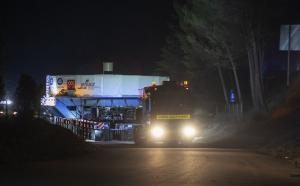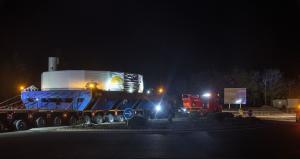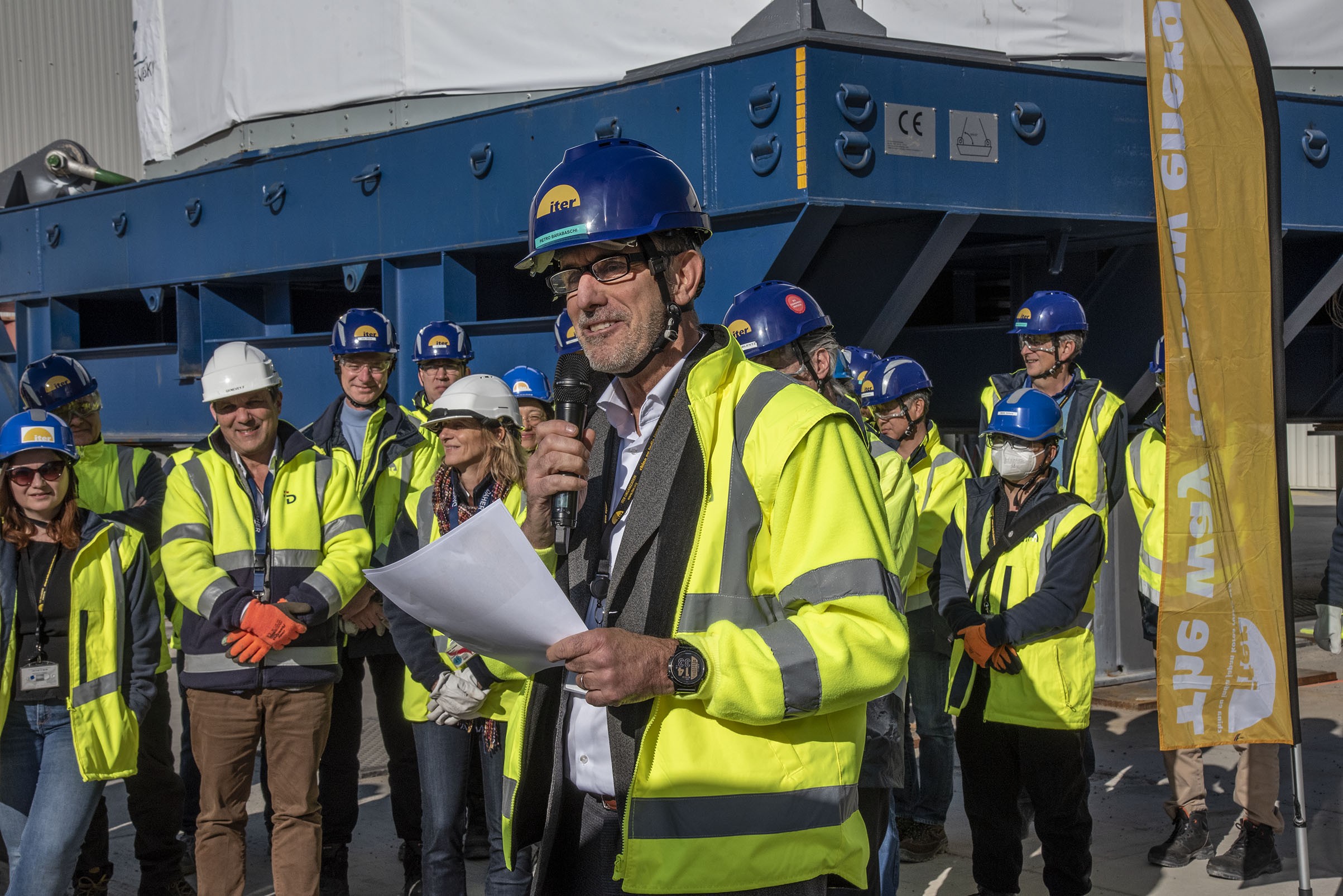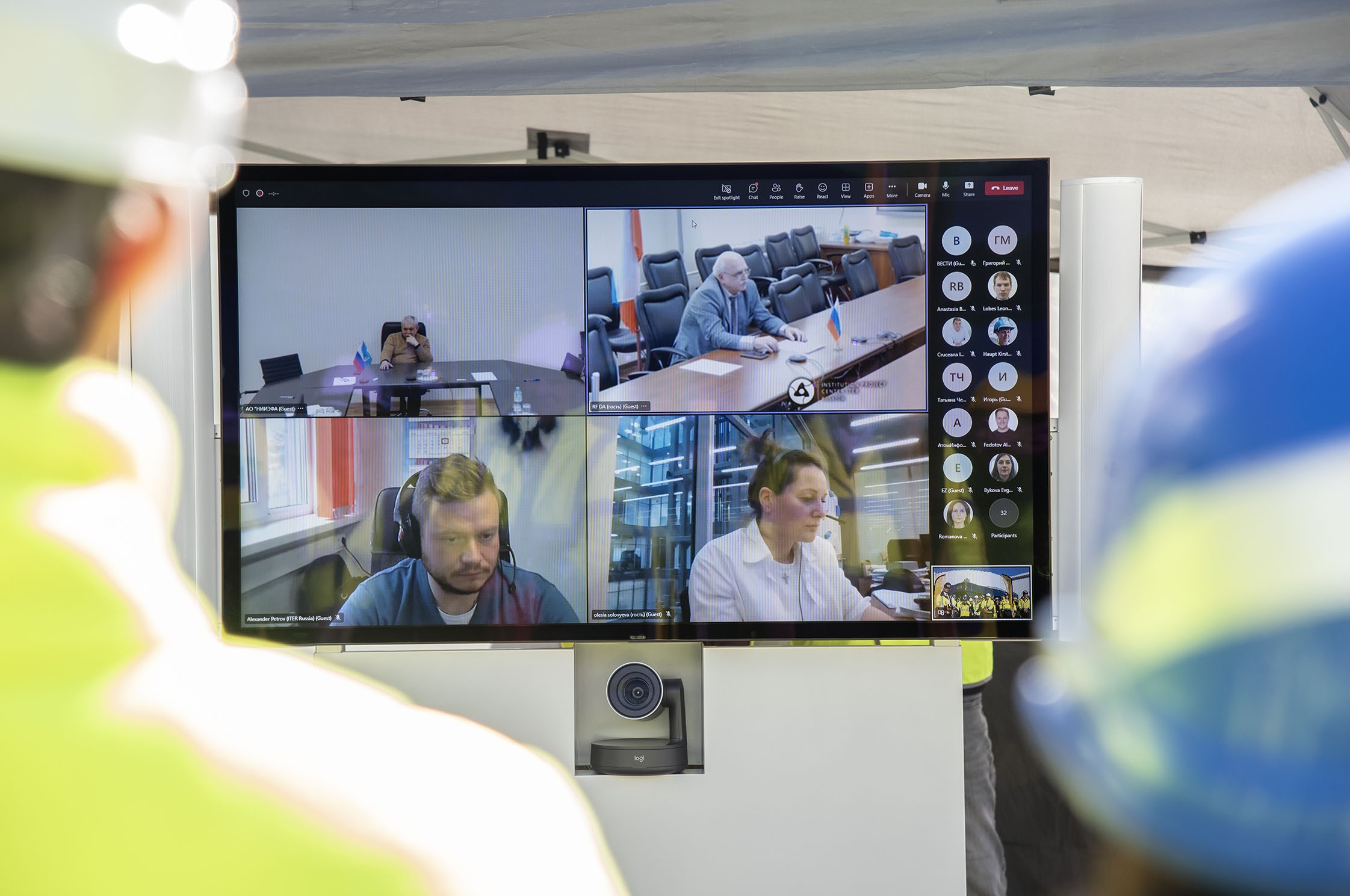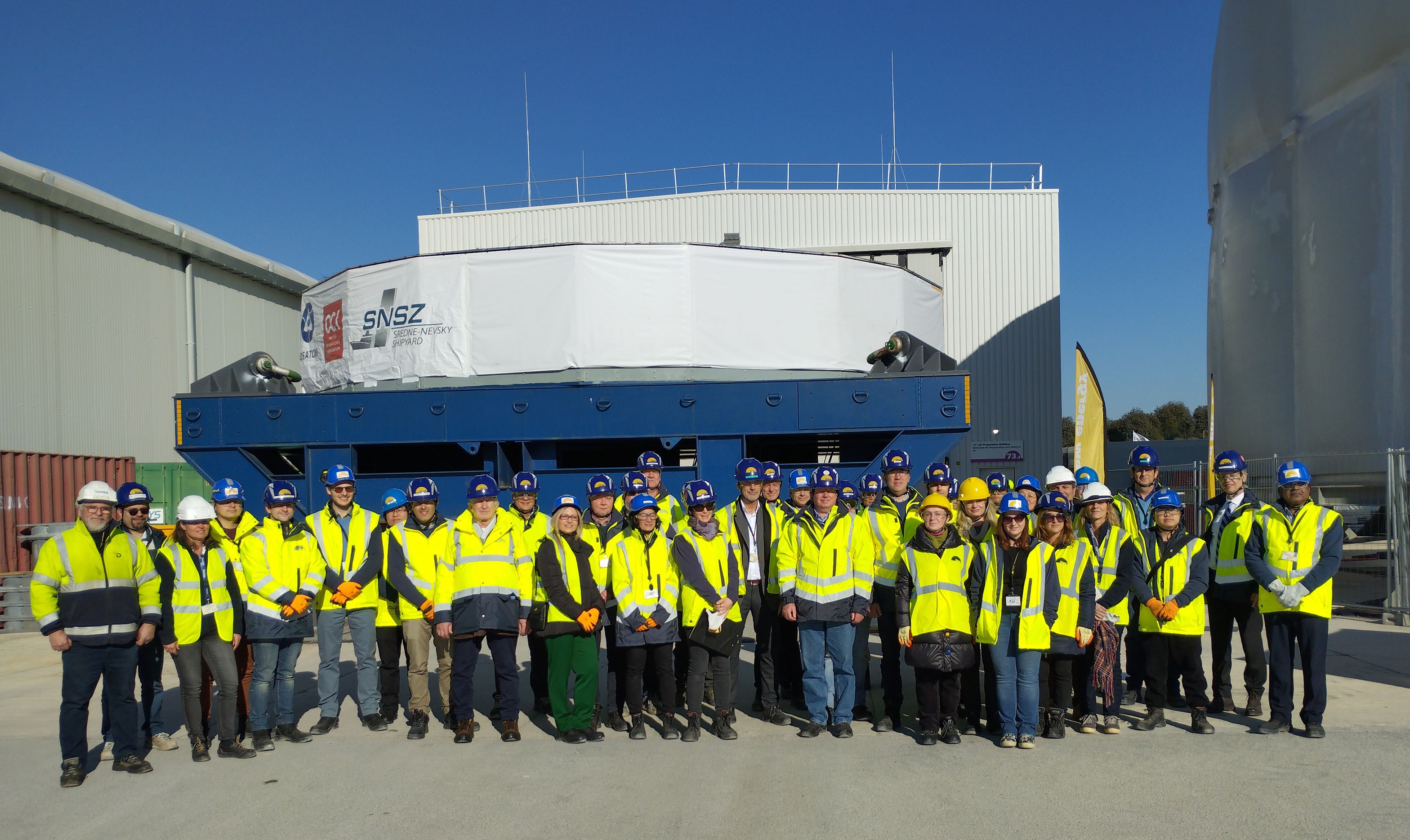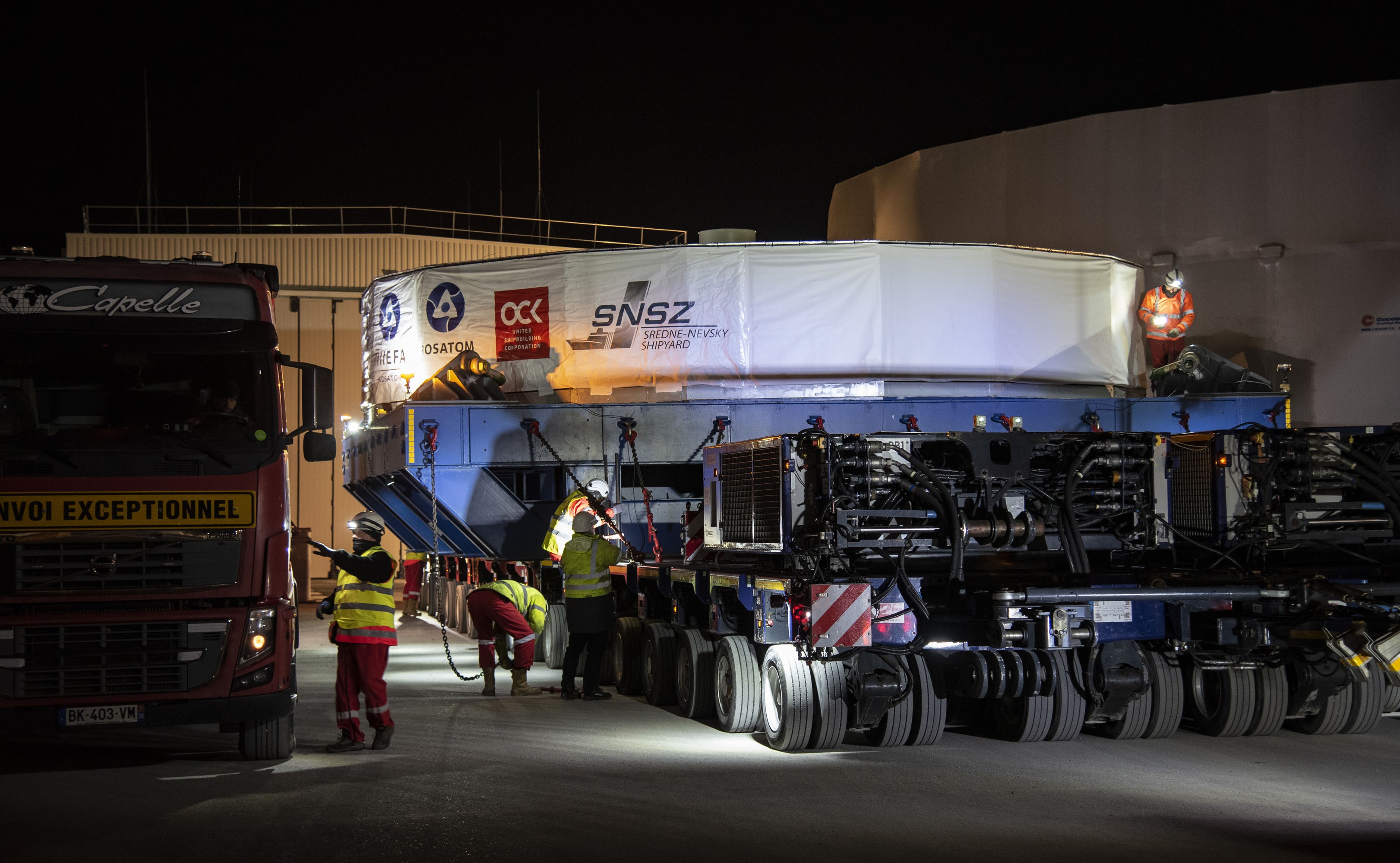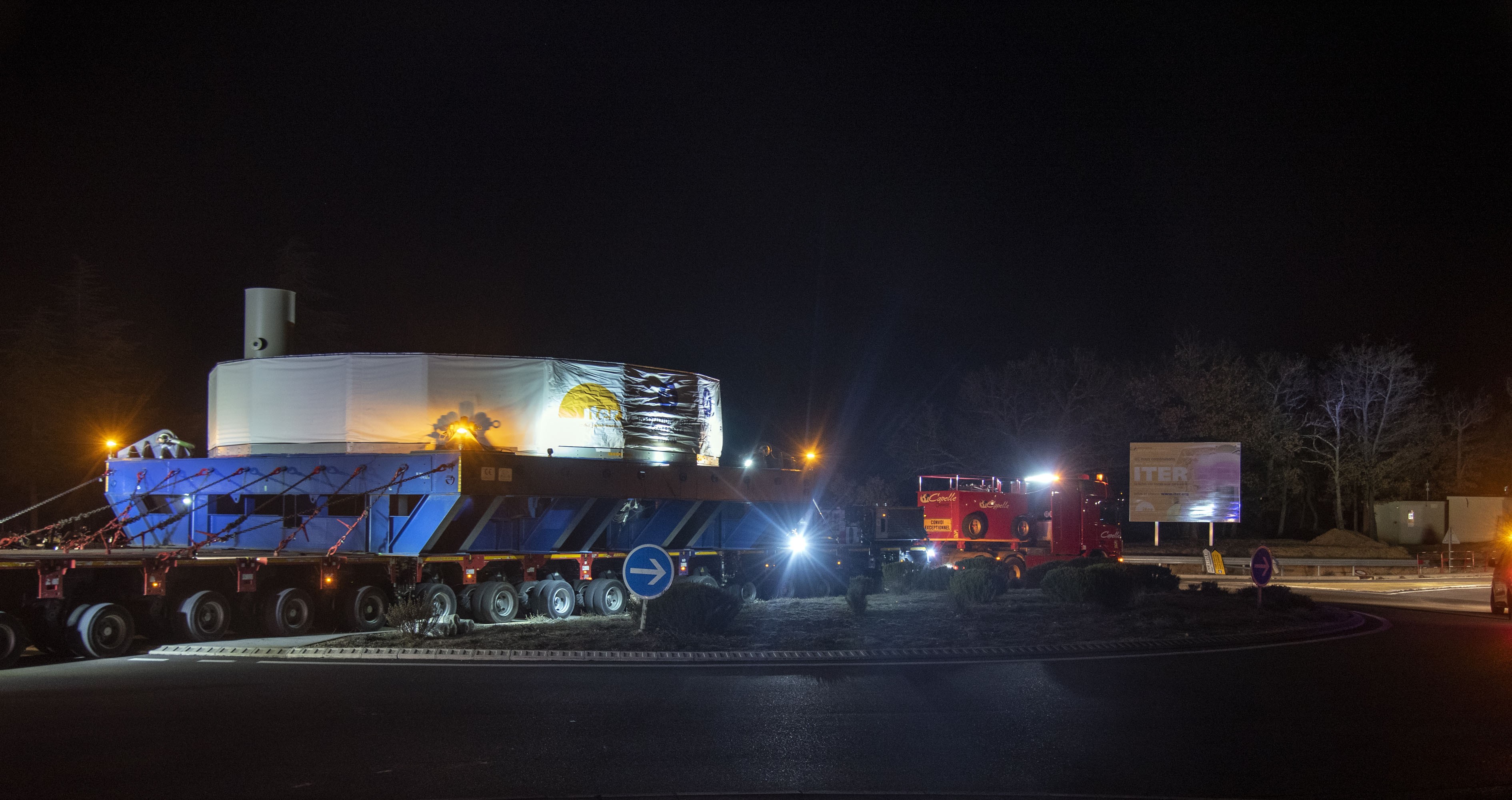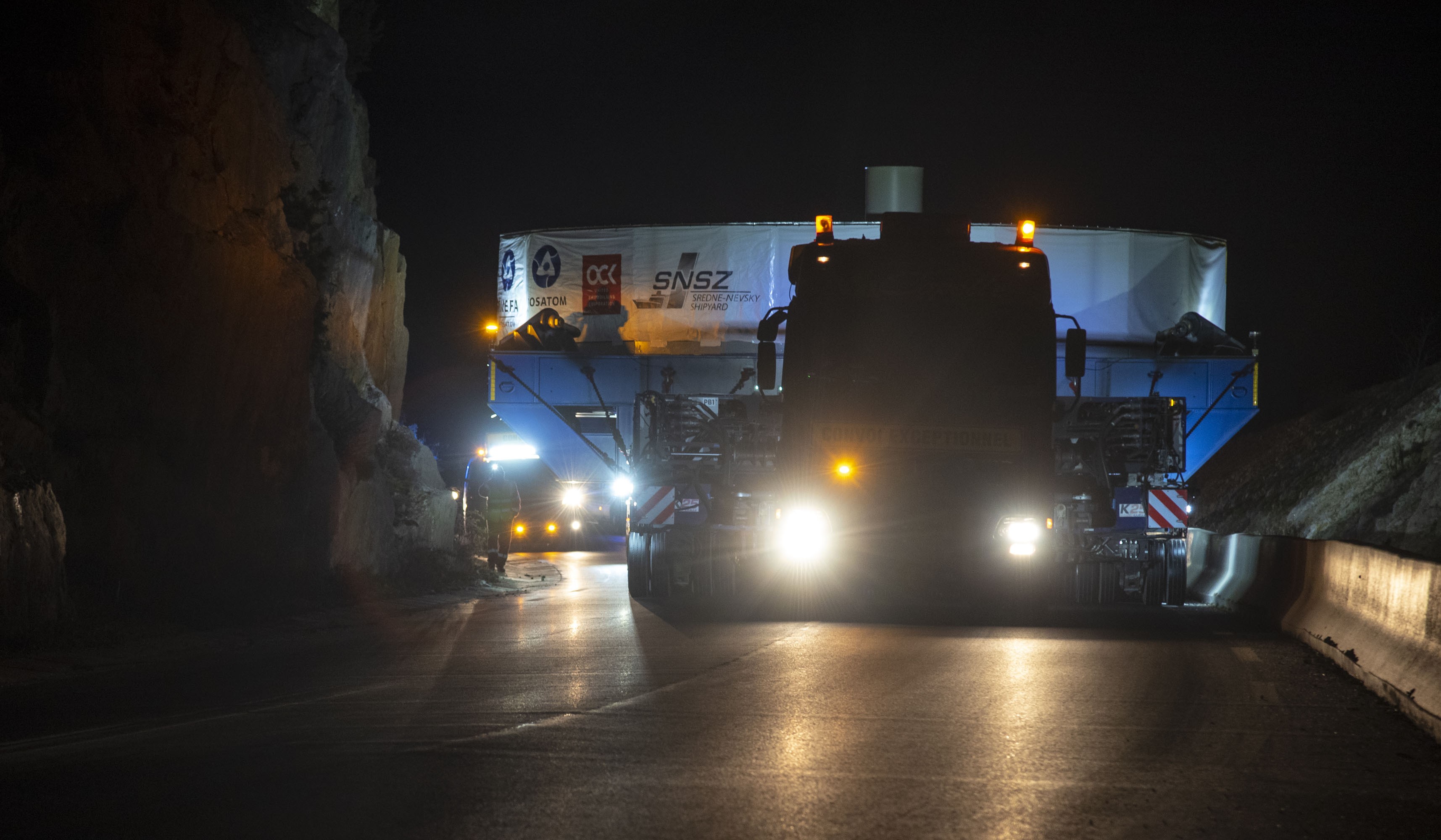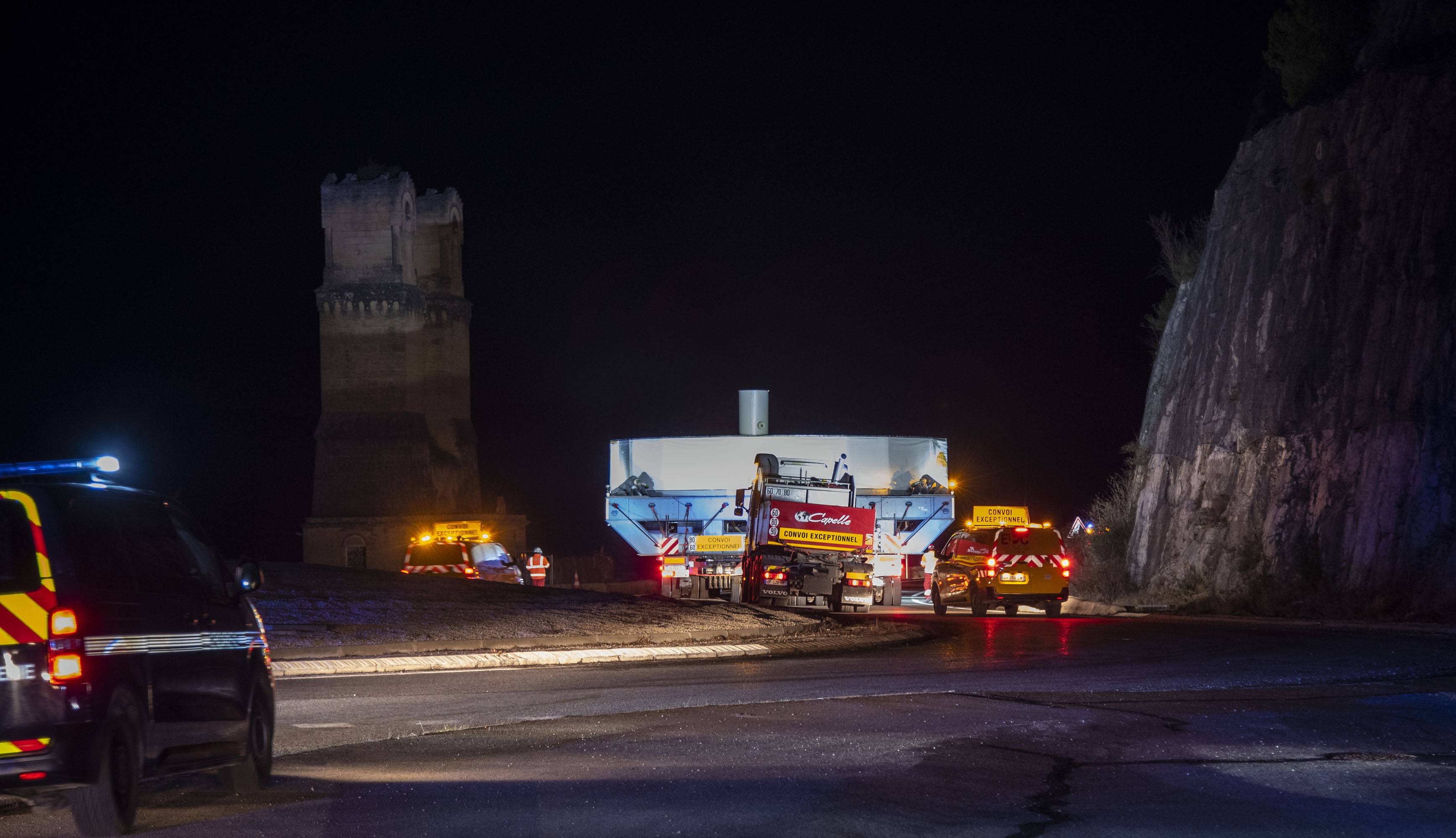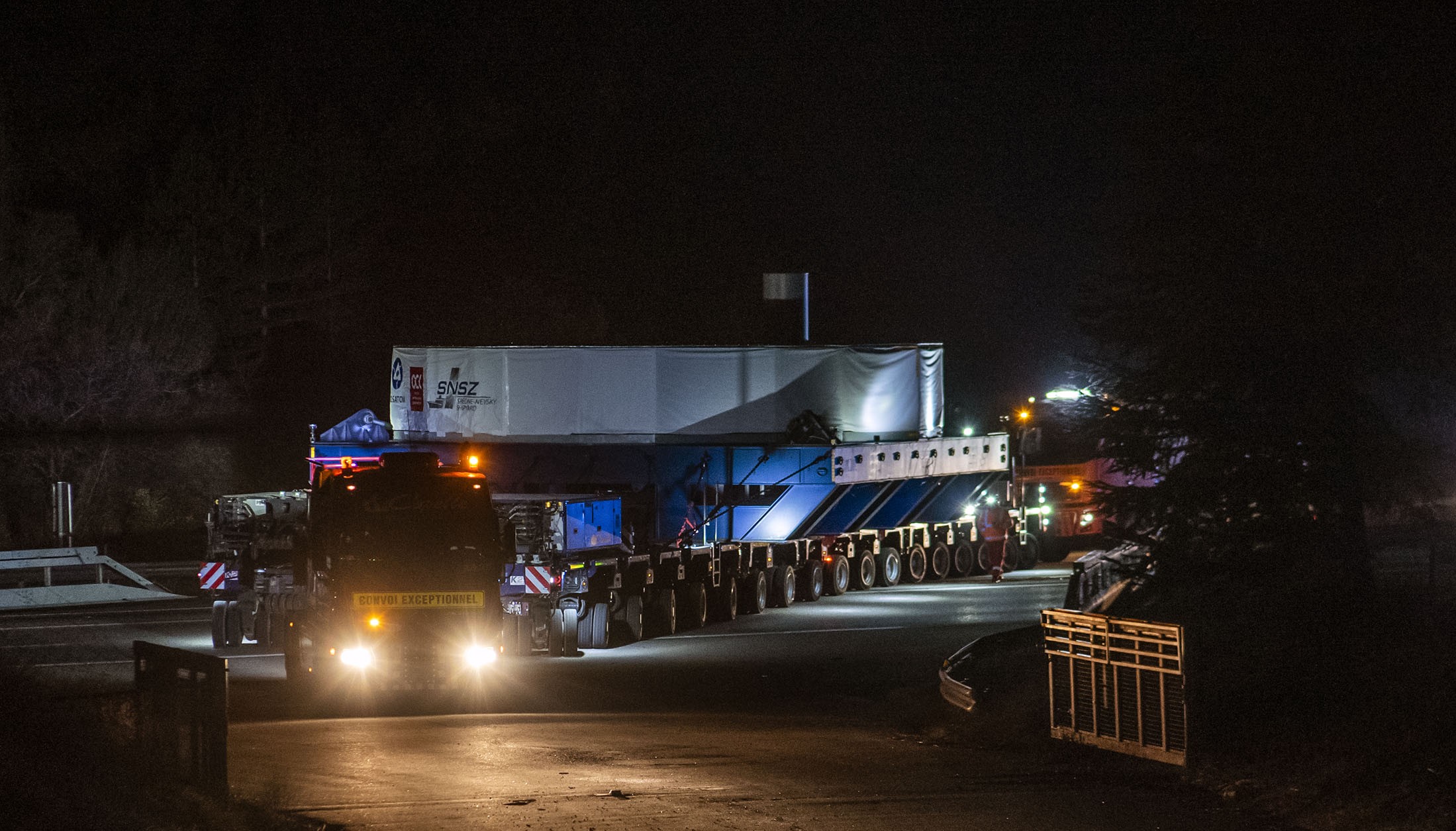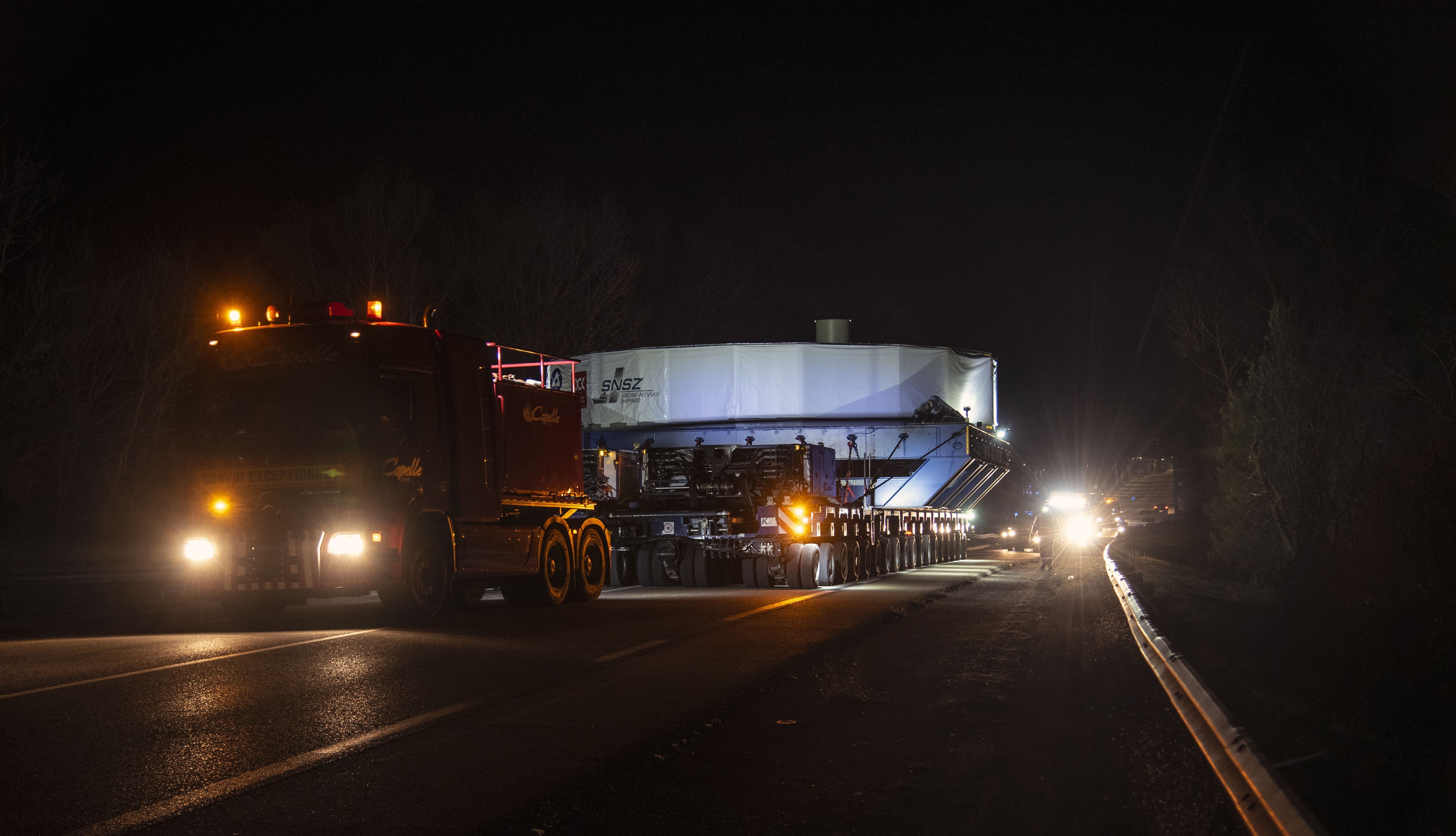Tous les aimants annulaires sont arrivés à bon port
La bobine PF1 n'est certainement pas la plus lourde des 141 charges hautement exceptionnelles qui ont emprunté l'itinéraire ITER depuis janvier 2015. Mais elle est l'une des plus larges, et donc l'une des plus délicates à manœuvrer sur les routes bordées de platanes, les ponts et le passage extrêmement étroit entre deux petites falaises situé quelques kilomètres avant le chantier ITER. Face à tous ces défis, il a fallu au convoi quatre nuits et non les trois habituelles pour parcourir les 105 kilomètres de l'itinéraire ITER.
Comme pour toutes les charges hautement exceptionnelles, les opérations de transport du convoi PF1 ont mobilisé une logistique complexe en termes d'hommes et de machines : 9 conducteurs, navigateurs et mécaniciens pour manœuvrer la remorque autopropulsée et les puissants tracteurs remorqueurs et pousseurs, une équipe de 14 personnes pour retirer les panneaux routiers et les autres obstacles sur la trajectoire de la remorque (et les remettre en place après le passage du convoi) ainsi que 70 officiers de gendarmerie.
L'arrivée de la bobine PF1 sur le chantier a marqué une nouvelle étape importante pour le programme ITER. En effet, chacun des sept Membres a désormais livré au moins un des éléments majeurs placés sous sa responsabilité.
S'exprimant depuis la Russie au nom d'Alexey Likhachev, le directeur-général de Rosatom, Anatoli Krasilnikov, le directeur de l'agence domestique russe, a qualifié ITER de « magnifique exemple illustrant l'étroite collaboration internationale », dont la Russie fait « partie intégrante ». Après un rapide point sur la progression du programme par Laban Coblentz, le directeur de la communication d'ITER, Krasilnikov a poursuivi sur une note plus personnelle : « Il s'agit pour nous d'une journée exceptionnelle, et ce n'est certainement pas la dernière. Nous aurons de nombreuses autres occasions de nous retrouver pour ce type de cérémonies et nous démontrerons que la fusion est une réalité. »
Pour Pietro Barabaschi, le directeur général d'ITER, la réception de l'aimant PF1 a fait passer un message fort : « ITER Organization et les agences domestiques restent fidèles à leur engagement de construire l'installation expérimentale ITER de manière intégrée,et, malgré les inévitables difficultés, nous réussirons, nous construirons le tokamak ITER et nous ferons éclore des capacités de recherche sans précédent au service de l'énergie de fusion. »
Avec l'entreposage de la bobine PF1 en lieu sûr, les six bobines de champ poloïdal sont arrivées à bon port : la PF6 et la PF5 sont déjà installées dans le puits d'assemblage du tokamak, la PF2 est entreposée dans la zone de stockage et la PF3 et la PF4 ont atteint les derniers stades du processus de fabrication et d'essai dans l'installation européenne de bobinage des aimants de champ poloïdal.
Cliquez ici pour visionner la vidéo retraçant le transport et la réception de la bobine PF1.

